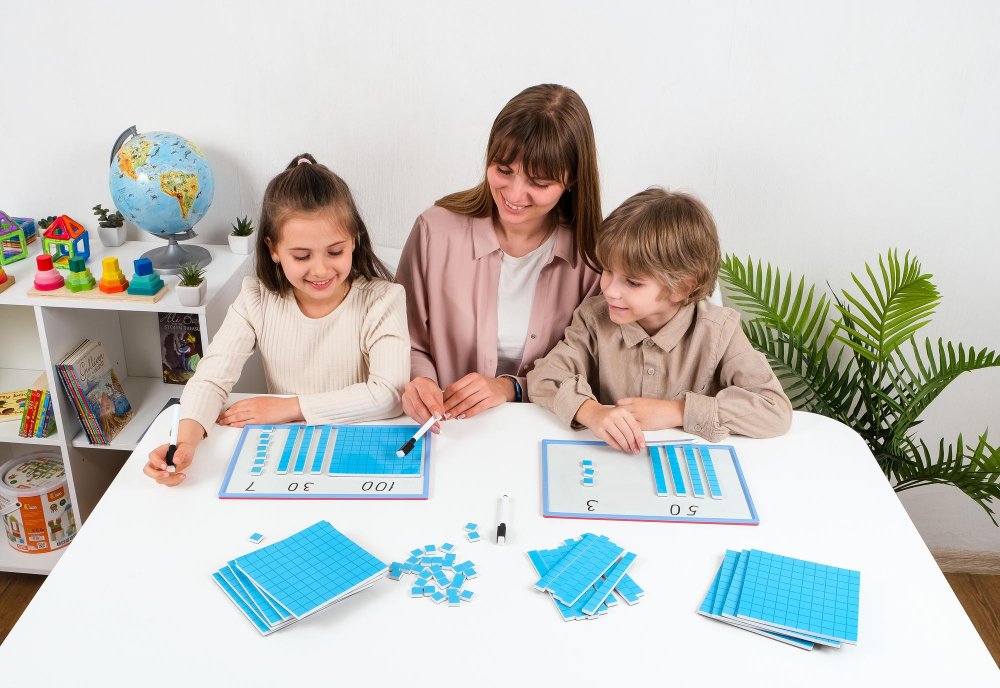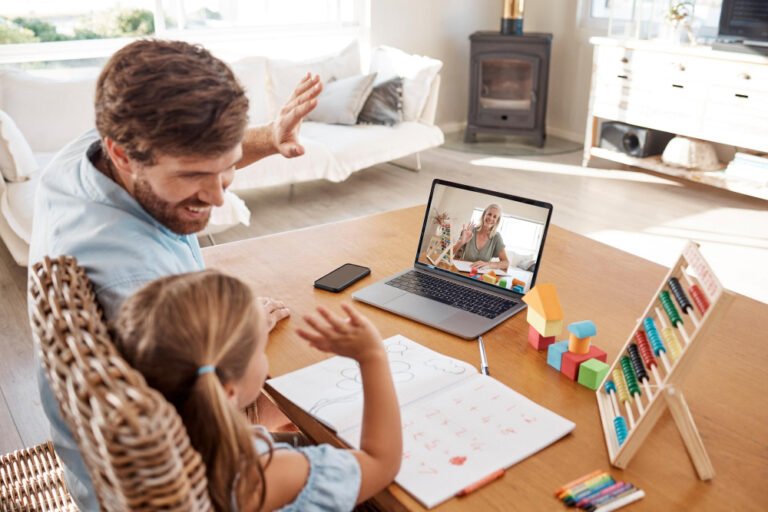ou hear it everywhere: “I was never good at math.” But what if we could stop passing that mindset down?
Whether math makes you freeze or yawn, your child doesn’t have to inherit that fear. With small shifts, math can become less about pressure — and more about curiosity, confidence, and connection.
📘 Start simply: Bedtime Math turns short stories into easy math moments that feel like fun. It’s a favorite for families.
This guide will help you create a math-positive environment at home — with language that supports learning, tools that make numbers visible, and emotional safety for mistakes.
Why Loving Math Starts With You
Children take emotional cues from us. If math makes you anxious, they notice — even when you don’t say it out loud.
You don’t have to pretend to love it. Just stay curious beside them:
- “I never learned it that way. Show me!”
- “Let’s figure it out together.”
- “You’re teaching me something new!”
When math becomes a shared challenge, not a solo struggle, learning sticks.
What Makes Math Hard (And How to Change That)
Sometimes the struggle isn’t about numbers — it’s about fear:
- Fear of being wrong
- Confusion that grows quietly
- Belief that “I’m not a math person”
To change that:
- Celebrate effort, not speed.
- Ask “What do you notice?” instead of “What’s the answer?”
- Give them time to think — silence is part of learning.
Tools That Help Kids Enjoy Math
You don’t need an advanced degree. Just the right tools at the right moment.
Try these:
- 🔢 Mathlink Cubes – Great for visualizing addition and subtraction
- ➗ Learning Resources Write & Wipe Number Line – Perfect for simple skip counting
- 🧮 Wooden Abacus Toy – Helps kids “see” numbers move
- 📚 Bedtime Math – Story-based problems for relaxed learning
- 🎲 Sum Swamp Game – A math adventure game they won’t want to stop playing
These tools work because they make math tangible — not abstract.
Emotional Safety: The Secret Ingredient
Kids can’t explore when they’re afraid of making mistakes. Math is full of trial and error — and that’s a good thing.
Here’s how to build safety:
- Say “mistakes help our brains grow.”
- Avoid “Why did you do that?” and ask “What were you thinking?”
- Don’t time everything. Timers can create anxiety.
Encouragement should sound like:
- “That was a tricky one — and you stayed with it.”
- “I love how you tried two different ways.”
Make Math Part of Life — Not Just Homework
Math is everywhere: recipes, clocks, LEGO builds, grocery carts. And if your child shows deeper struggles with numbers or concepts, it may be helpful to explore other learning differences too. Read our post on how to recognize signs of dyslexia in children for insights that go beyond reading and can affect math confidence too.
- Let them estimate total cost at the store.
- Ask them to double a pancake recipe.
- Build towers and talk about shapes, angles, and balance.
The more math shows up in real life, the less scary it feels in books.s.
Bringing It All Together
Even if math wasn’t your strength growing up, you now have the chance to rewrite the narrative at home. When children feel safe to ask, try, and stumble, they begin to see math as something they can explore — not something they have to fear.
By shifting the focus from performance to progress, and from pressure to play, you help build a foundation where curiosity grows. That’s how confidence is formed — not overnight, but in ordinary, everyday moments where learning feels connected to life.
Try noticing one of those small moments today, and let it remind you: your presence is enough.






